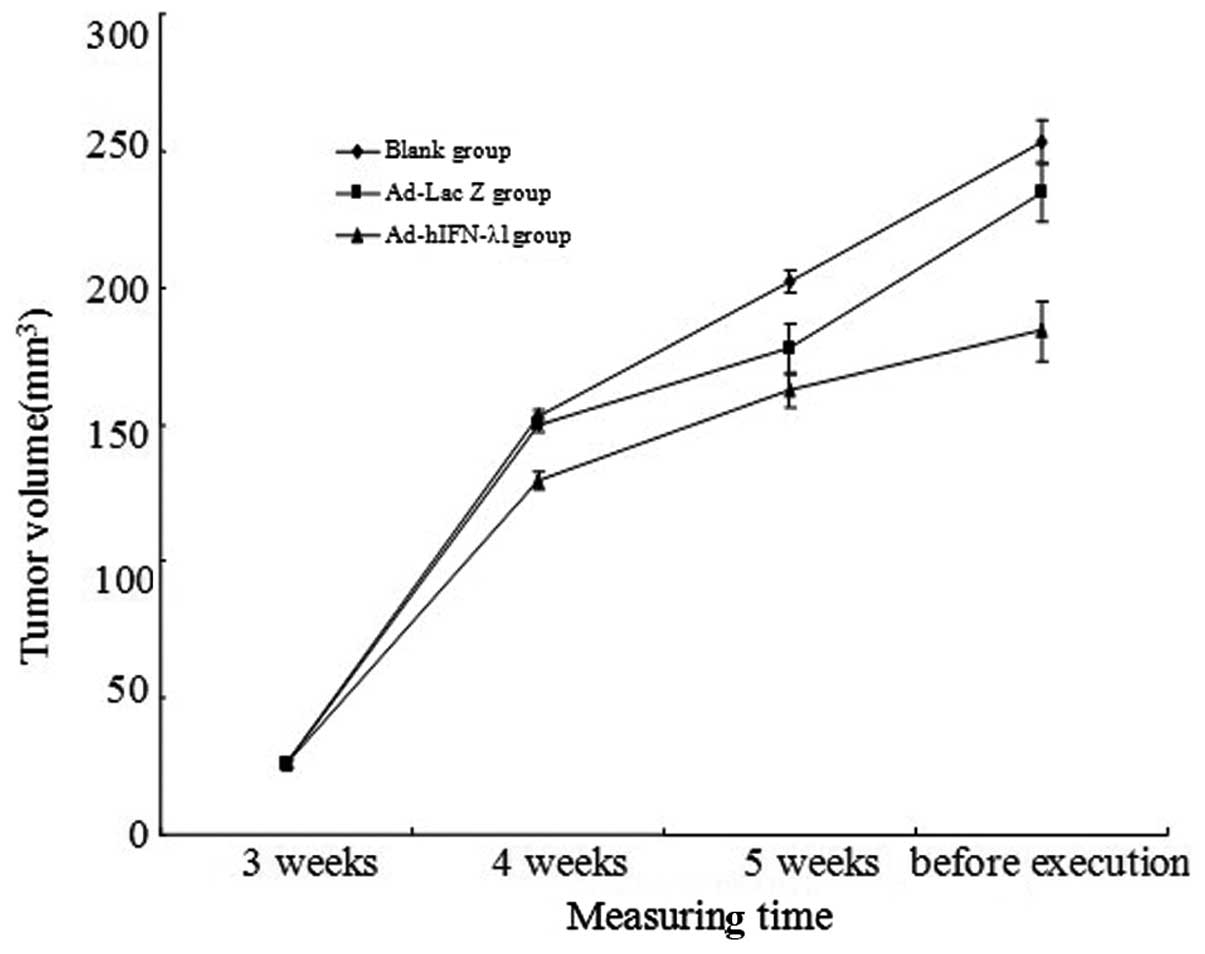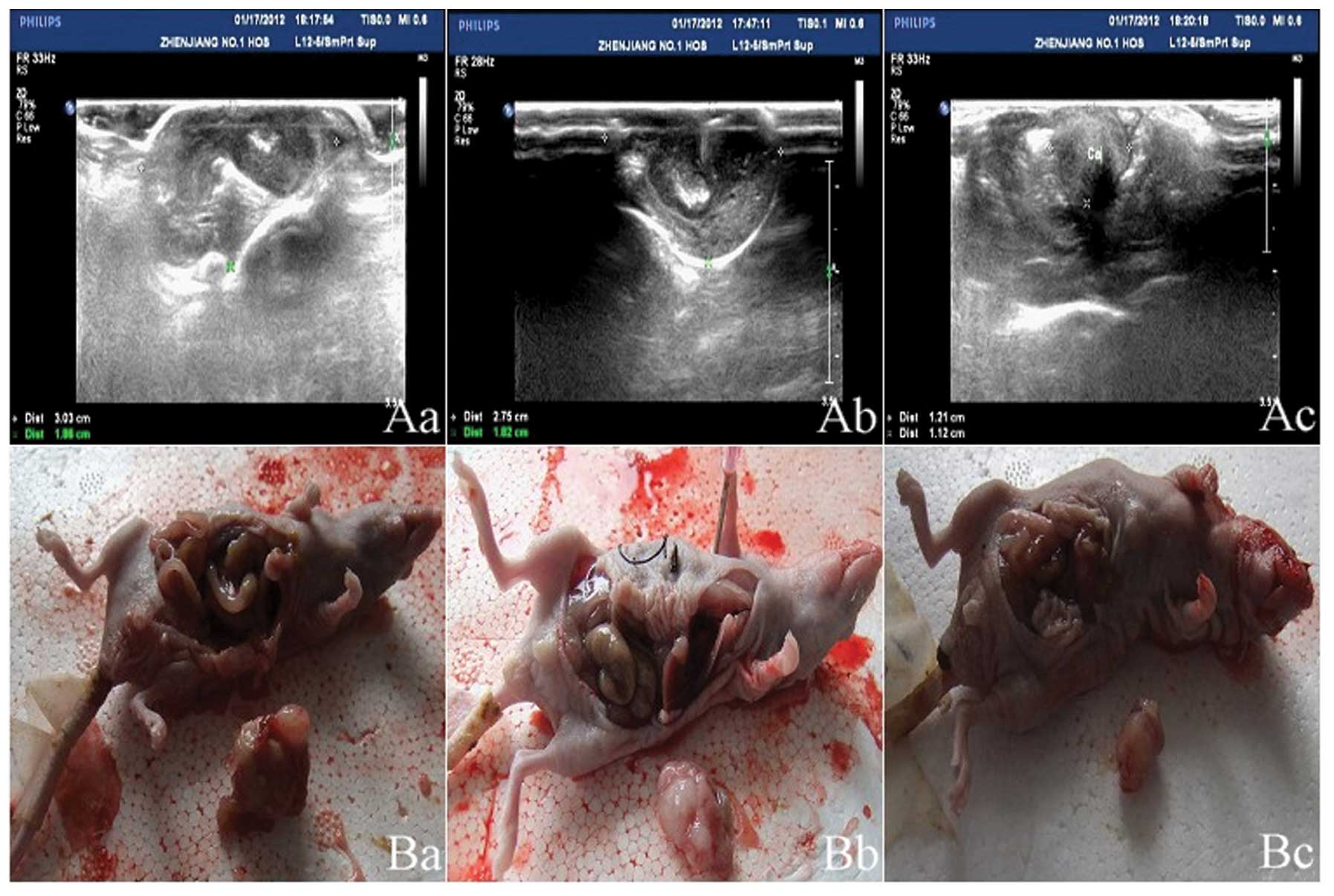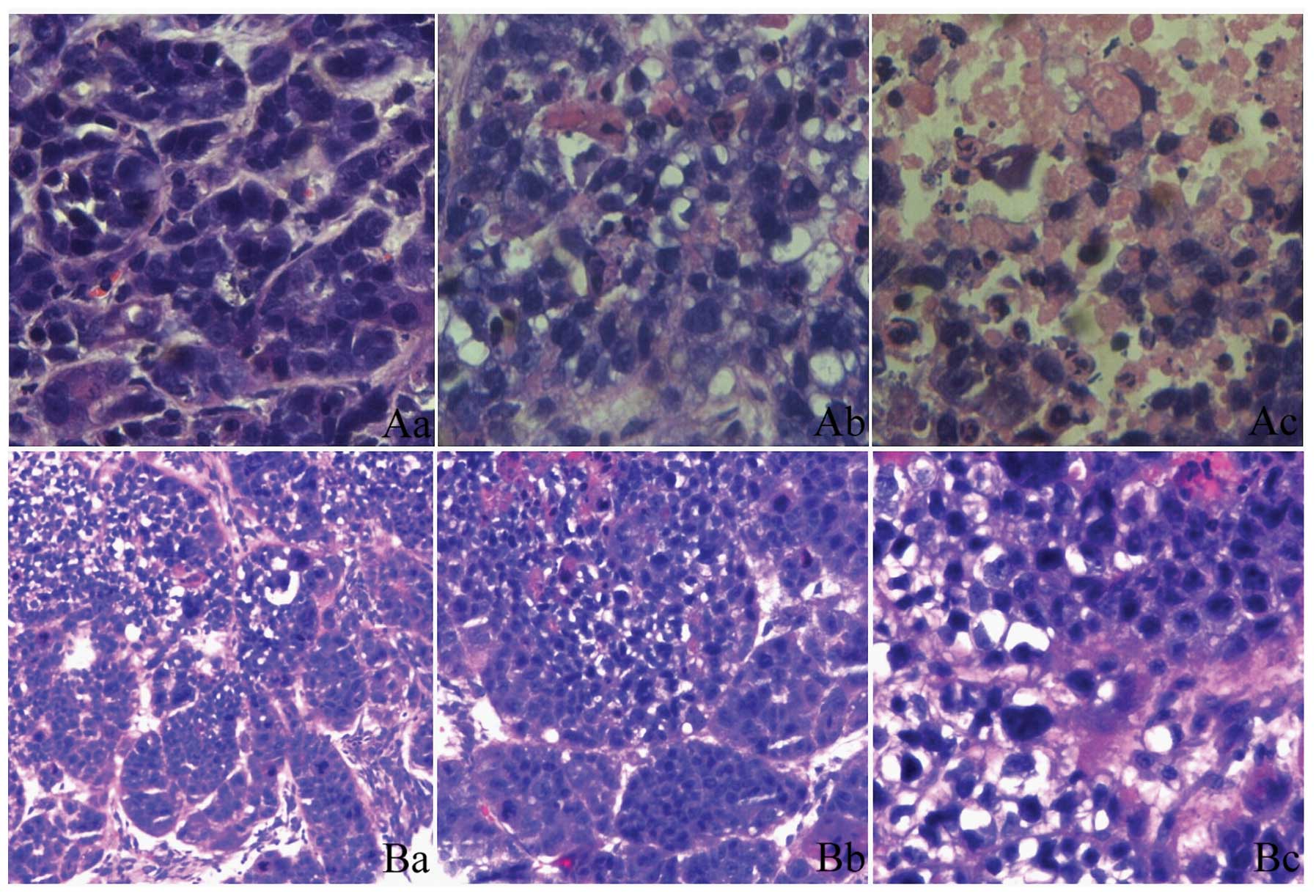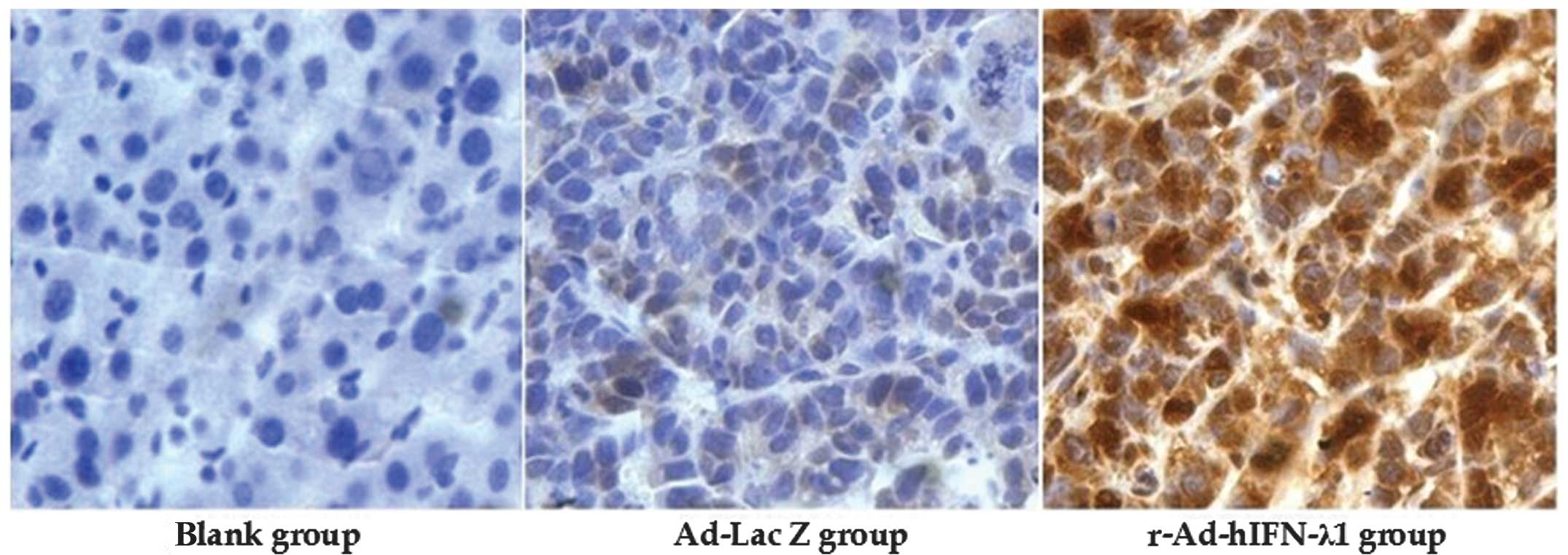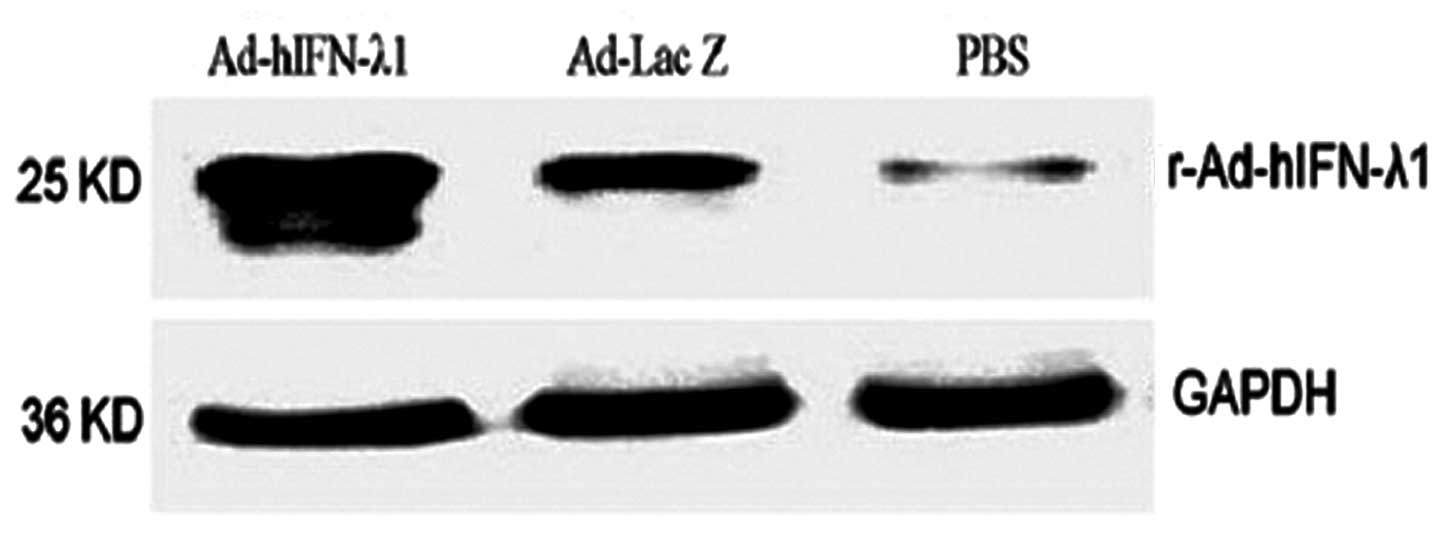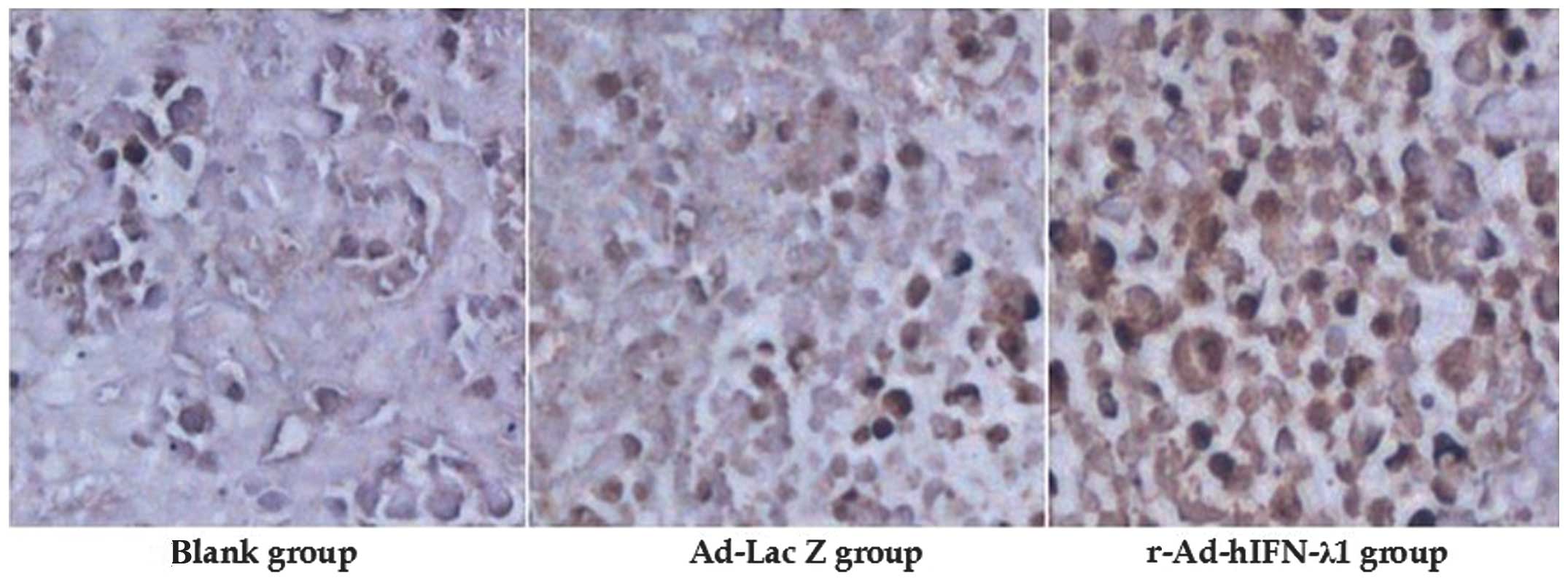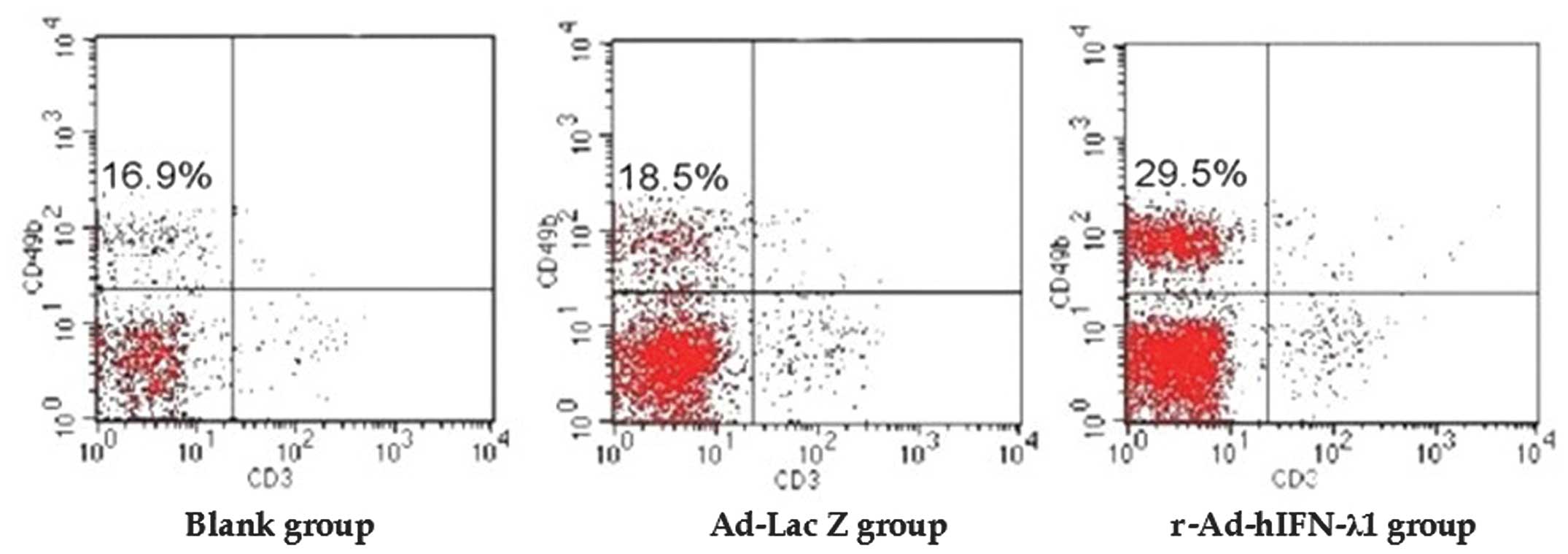Effect of human interferon‑λ1 recombinant adenovirus on a gastric cancer orthotopic transplantation model
- Authors:
- Published online on: August 11, 2014 https://doi.org/10.3892/etm.2014.1896
- Pages: 1115-1122
Metrics: Total
Views: 0 (Spandidos Publications: | PMC Statistics: )
Total PDF Downloads: 0 (Spandidos Publications: | PMC Statistics: )
Abstract
The aim of the present study was to investigate the effect of human interferon‑λ1 recombinant adenovirus (r‑Ad‑hIFN‑λ1) on gastric carcinoma. Human SGC‑7901 cells were utilized to create an orthotopic implantation model of gastric cancer in nude mice through sterile surgery. The mice were randomly divided into three groups: Phosphate‑buffered saline control (blank), adenovirus encoding bacterial β‑galactosidase (Ad‑Lac Z) empty vector and r‑Ad‑hIFN‑λ1. Tumor size was measured every seven days. After three weeks of treatment, the tumors in the mice were detected by abdominal B ultrasound. The cDNA of IFN‑λ1 expression in skeletal muscle was detected by a reverse transcription polymerase chain reaction and IFN‑λ1 protein expression in the tumors was detected by western blot analysis and immunohistochemistry. Flow cytometry and terminal deoxynucleotidyl transferase‑mediated dUTP‑biotin nick end labeling (TUNEL) assays were conducted to analyze the proportion of natural killer (NK) cells in the spleen and the rate of cell apoptosis in tumor paraffin sections. Prior to sacrifice, the size of the tumors in the r‑Ad‑hIFN‑λ1, Ad‑Lac Z and blank groups was 184.29±10.84 mm3, 234.62±10.59 mm3 and 253.18±7.69 mm3, respectively (P<0.001). The lymph node metastasis in the abdominal cavity was 0% in the r‑Ad‑hIFN‑λ1 group, 50% in the Ad‑Lac Z group and 80% in the blank group (P<0.005). Furthermore, IFN‑λ1 mRNA and protein were highly expressed in the r‑Ad‑hIFN‑λ1 group, and the apoptosis rate in the r‑Ad‑hIFN‑λ1 group was higher than that in the Ad‑Lac Z and blank groups. The proportion of NK cells in the spleens of nude mice in the r‑Ad‑hIFN‑λ1, Ad‑Lac Z and blank groups was 26.53±1.54, 17.70±1.09 and 16.35±1.43%, respectively (P<0.001). The TUNEL results showed there was significantly more severe apoptosis in the r‑Ad‑hIFN‑λ1 group than that in the two other groups. The apoptosis indices in the r‑Ad‑hIFN‑λ1, Ad‑Lac Z and blank groups were 0.772±0.075, 0.329±0.169 and 0.265±0.049, respectively. In conclusion, the r‑Ad‑hIFN‑λ1 significantly inhibited human gastric cancer, possibly by promoting apoptosis of the tumors and stimulating immunological function.



